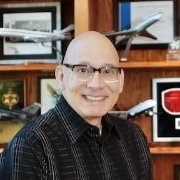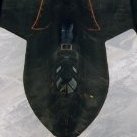
Dana Bell
LSP_Members-
Posts
216 -
Joined
-
Last visited
-
 dutik reacted to a post in a topic:
F4U-1D Cowl Interior Color?
dutik reacted to a post in a topic:
F4U-1D Cowl Interior Color?
-
 TAG reacted to a post in a topic:
F4U-1D Cowl Interior Color?
TAG reacted to a post in a topic:
F4U-1D Cowl Interior Color?
-
 ScoobyDoo reacted to a post in a topic:
F4U-1D Cowl Interior Color?
ScoobyDoo reacted to a post in a topic:
F4U-1D Cowl Interior Color?
-
 Christa reacted to a post in a topic:
F4U-1D Cowl Interior Color?
Christa reacted to a post in a topic:
F4U-1D Cowl Interior Color?
-
 CRAZY IVAN5 reacted to a post in a topic:
F4U-1D Cowl Interior Color?
CRAZY IVAN5 reacted to a post in a topic:
F4U-1D Cowl Interior Color?
-
 Juggernut reacted to a post in a topic:
F4U-1D Cowl Interior Color?
Juggernut reacted to a post in a topic:
F4U-1D Cowl Interior Color?
-
F4U-1D Cowl Interior Color?
Dana Bell replied to Juggernut's topic in Aviation Discussion & Research
Hi Juggernut, My factory drawing for 4-tone F4Us called out both Light Gray and Intermediate Blue as the two choices for cowling interiors - Vought was trying to use up extra paint stocks as cowl finish coats. Right now I can't get to my overall Glossy Sea Blue scheme drawings, but I suspect the colors were the same. Cheers, Dana -
 coogrfan reacted to a post in a topic:
Were any F4F-3 Late painted early scheme with yellow upper wings?
coogrfan reacted to a post in a topic:
Were any F4F-3 Late painted early scheme with yellow upper wings?
-
 D Bellis reacted to a post in a topic:
Were any F4F-3 Late painted early scheme with yellow upper wings?
D Bellis reacted to a post in a topic:
Were any F4F-3 Late painted early scheme with yellow upper wings?
-
 firefly7 reacted to a post in a topic:
Were any F4F-3 Late painted early scheme with yellow upper wings?
firefly7 reacted to a post in a topic:
Were any F4F-3 Late painted early scheme with yellow upper wings?
-
 Shoggz reacted to a post in a topic:
Were any F4F-3 Late painted early scheme with yellow upper wings?
Shoggz reacted to a post in a topic:
Were any F4F-3 Late painted early scheme with yellow upper wings?
-
I was regretting my lack of time to dig out the notes and write this up - now I see that I did something on the Wildcat colors five years ago! I've got to get my memory checked (if only I can remember to). One note on the side-view drawings - remember (there's that word again) that the original production F4F cowls were two-piece installations, with top and bottom halves. Cheers, Dana
-
Curtiss F9-C Sparrowhawk, silver wings?
Dana Bell replied to GeoffSteer's topic in Aviation Discussion & Research
Hi Geoff, As a rule of thumb, most early- and mid-1930s US Navy aircraft were painted with aluminized enamel on fabric surfaces and Light Gray enamel on metal surfaces. (The aluminized enamel didn't stick to the metal primer, so Light Gray was substituted.) With fabric-covered wings, the F9C would have used aluminum enamel on the wings, as confrimed by B&W photos and color pix of restored aircraft. Later, primers changed, aluminized lacquers and dopes were introduced, and subsequent aircraft switched to all aluminized finishes. Cheers, Dana -
I remember a kit from the very lat '50s that included detailed engines and cockpits (at least for the era) and partially retracting landing gear, all with a pedistal mount and cable-attached joy stick. I made a pre-teenager's mess of the thing, and wish I had one today. There was also a box-scale Revell. Cheers, Dana
-
25 years of Bunrin do Koku fan online!
Dana Bell replied to thierry laurent's topic in Aviation Discussion & Research
I have enough trouble with folks using a site like this, but I wish we wouldn't tell folks about it. This site has no respect for copyright, and offers free access to books that are still in print. As one of the authors featured, I've no respect for sites that think a scanner is a great substitute for research and writing... Cheers, Dana -
Hi TRF, The Light Gray/Blue Gray scheme was a quick, untested response to the Navy's need for a darker, overwater scheme. When BuAer responded to the Fleet's request for a darker upper surface color, Washington sent a simple chip of a color that had been tested for a camouflage to hide aircraft from shipboard gunners. The Fleet said "fine" and the rest was history. The color was far too light, and within weeks of the Pearl Harbor attack the Fleet was demanding a darker choice - this resulted in a color callled Dark Blue, a relative of carrier Deck Blue paint. At the same time the folks at North Island were working on a graded scheme of black, grays, and white. Although a blue version was less stable, the admirals wanted their airplanes to be blue, and the 4-color scheme was approved in late 1942. The ASW schemes were tested extensively, though at a lower priority. They were designed to either hide from surface vessles, either cutting shadows in bright skies, or reducing glint in darker skies. Interestingly, neither scheme was approved for use if enemy aircraft were expected to be present. Cheers, Dana
-
Israeli P-51D camo colors
Dana Bell replied to CRAZY IVAN5's topic in Aviation Discussion & Research
Hi Ivan, I've wondered about the Israeli colors for over half a century, but no one seems to have a contemporary source. There are a number of modelers' solution that look really good, but no Israeli instruction, plan, or memo. The closest I've found was in Sikorsky factory plans for export S-55s and S-58s -- they call out US ANA 616 Sand and the Dark Gray that later became 36118. (All my documents are boxed up due to a move, and I can't remember which gray was used underneath.) It seems that the Middle Eastern sum might have faded those paint to what we see in color photos, but I don't know for certain. Cheers, Dana -
Hi All! The photo came from Bunker Hill, listed as taken on 22 July 1943. The pilot was OK, with minor injuries. Although the photo contrast makes the wings appear white below, the original shows the outer panels to be Intermediate Blue; the aircraft had been repainted in the 4-color graded camouflage at Norfolk. As Crazy Ivan5 noted, the Corsairs were removed from carrier duty less than a month after this photo was taken - not because of safety concerns, but wholly to simplify fleet logistics. The Corsair was the superior aircraft, but there were already more operational Hellcat units available. Further advances in the Corsair led the F4U's return to carrier ops in late 1943. The story about the Brits teaching us to circle for landing is so deeply intrenched that it may never go away. Movies from the 1930s, as well as early Corsair tests, show that the circling approach had been standard US Navy prectice for years. What the Brits did show us involved a revision to the landing signal officer's prectice: the USN LSOs had been dropping an arm to show that a wing was too low, signally to describe an approach problem. The Brits taught us to show the solution - if a wing was too low, the LSO would raise the paddle (or flag) on that side to direct the pilot to raise the wing. Cheers, Dana
-
Hi Thierry, The TBDs were deivered with aluminized enamel in the wheel wells. There was little need to repaint them tinted zinc chromate, though anything is possible. The underwater photos suggest that the aircraft may have repainted the wells Light Gray with the introduction of camouflage. Cheers, Dana
-
I'm not sure if Squadron has a copublishing or distribution agreement in the UK. In the old days we could rely on Lionel Leventhal and Arms and Armour Press - those were truly great days with one of the best publishers! Dana (You might defray postage by buying multiple copies with friends and sharing postage.)
-
Hi Rod, Not a problem. There can be endless discussions about color names and applications, and the new book updates that. However, what really matters is how does the paint applied to a model appear, and your choice looks really good. If I can ever make the time to build a TBD, I'll be very happy if mt cockpit looks as good as yours! Cheers, Dana
-
Looks really good, Rod! Were you quoting the original TBD Devastator in Action or the brand new In Action that came out a few weeks ago? Cheers, Dana
-
Sounds good - I look forward to seeing your build! Cheers, Dana
-
Although the Fleet reported that they had painted the cockpits Bronze Green, they had actually used black-tinted zinc chromate - AKA Green zinc chromate. Had they added aluminum the color would have been callled Yellow Green. Had they used a bit less black the color might have matched Interior Green. In fact, the last four production aircraft from the original order and all fifteen aircraft on the second order left the factory with aluminized zinc chromate (no black pigment) - a bright pastel green. The canopy frames on those aircraft were Bronze Green inside and out, Cheers, Dana
-
1/32 Douglas TBD-1 Devastator by Trumpeter - TBD-1A in October 2023!
Dana Bell replied to Kagemusha's topic in LSP Discussion
Brandon at Squadron was able to fix the problems on Amazon - the TBD book is now available there at this link: https://www.amazon.com/dp/B0CQZ1L72C?ref=myi_title_dp Cheers, Dana







